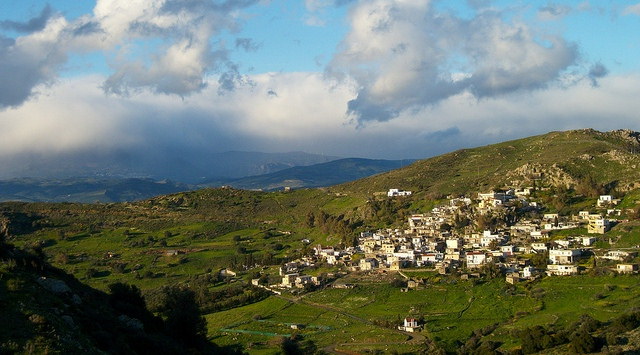When most people think of Crete, they envision its pristine beaches with crystal-clear waters and golden sands. However, this largest Greek island has much more to offer beyond its stunning coastline. Venture inland, and you will discover a world of breathtaking landscapes, traditional villages, and rich cultural heritage. Exploring Crete’s inland beauty reveals a side of the island that is both enchanting and less traveled, offering a deeper understanding of its natural and cultural wonders.
Majestic Mountains and Rugged Gorges
Crete’s topography is dominated by its impressive mountain ranges, which create dramatic and varied landscapes. The White Mountains (Lefka Ori) in the west, Mount Ida (Psiloritis) in the center, and the Dikti Mountains in the east are the three main ranges that beckon explorers with their rugged peaks, deep gorges, and lush plateaus.
Samaria Gorge
One of the most famous inland attractions is the Samaria Gorge, located in the White Mountains. This 16-kilometer-long gorge is one of the longest in Europe and offers a challenging yet rewarding hike. The trek through the gorge takes you through diverse terrain, from narrow passages and steep cliffs to lush forests and clear streams. Along the way, you may spot kri-kri (Cretan wild goats) and other wildlife. The hike ends at the coastal village of Agia Roumeli, where you can relax and take a refreshing dip in the sea.
Lasithi Plateau
In the eastern part of Crete, the Lasithi Plateau is a fertile highland area surrounded by the Dikti Mountains. Known for its iconic windmills and traditional villages, the plateau is a haven for nature lovers and those seeking a peaceful retreat. The plateau is dotted with orchards, vineyards, and vegetable gardens, showcasing the island’s agricultural heritage. The Dikteon Cave, a significant archaeological and mythological site where Zeus is said to have been born, is also located here, adding a historical dimension to your visit.
Anogeia and Cretan Villages
Exploring Crete’s inland beauty also means delving into its traditional villages, where time seems to have stood still. These villages offer a glimpse into the island’s past and present, with their stone houses, narrow streets, and vibrant local culture.
Anogeia
Anogeia, situated on the slopes of Mount Ida, is one of Crete’s most famous villages. Known for its strong cultural identity and resistance during World War II, Anogeia is a hub of traditional music, weaving, and craftsmanship. The villagers are known for their hospitality and pride in their heritage. Visiting Anogeia, you can enjoy authentic Cretan music, witness local artisans at work, and savor traditional dishes in family-run tavernas.
Archanes
Another charming village is Archanes, located near Heraklion. Archanes is renowned for its well-preserved architecture, historical significance, and excellent wine production. The village has been beautifully restored, with colorful houses, flower-filled courtyards, and cobblestone streets. Archanes is also home to archaeological sites, including the Minoan settlement of Fourni and the Palace of Vathypetro. Wine enthusiasts can visit local wineries to sample some of Crete’s finest wines, made from indigenous grape varieties.
Natural Wonders and Outdoor Activities
Crete’s inland regions are a paradise for outdoor enthusiasts, offering a wide range of activities that allow you to connect with nature and explore the island’s diverse landscapes.
Hiking and Trekking
In addition to the Samaria Gorge, Crete boasts numerous hiking trails that cater to all levels of fitness and experience. The E4 European long-distance path crosses the island, passing through stunning scenery, traditional villages, and historical sites. Whether you prefer a leisurely walk through olive groves or a challenging trek up a mountain peak, Crete’s hiking trails provide endless opportunities for adventure.
Caving
Crete’s karstic landscape is dotted with caves, many of which have historical and mythological significance. Apart from the Dikteon Cave, the Idaean Cave on Mount Ida is another notable site. Believed to be the birthplace of Zeus according to mythology, this cave is an important archaeological site with impressive stalactites and stalagmites. Exploring these caves offers a fascinating journey into the island’s geological and cultural history.
Agrotourism
For those interested in sustainable tourism and agriculture, Crete’s inland regions offer agrotourism experiences that allow visitors to participate in traditional farming activities. You can stay on family-run farms, learn about olive oil production, wine making, and cheese making, and enjoy farm-to-table meals made from locally sourced ingredients. These experiences provide a deeper appreciation of Crete’s agricultural heritage and its connection to the land.
Conclusion
While Crete’s beaches are undeniably beautiful, the island’s inland regions offer a wealth of attractions and experiences that are equally captivating. From majestic mountains and rugged gorges to traditional villages and outdoor adventures, exploring Crete’s inland beauty reveals a rich tapestry of natural and cultural treasures. By venturing beyond the coastline, you can discover the true essence of Crete and create unforgettable memories in this enchanting Mediterranean paradise.


